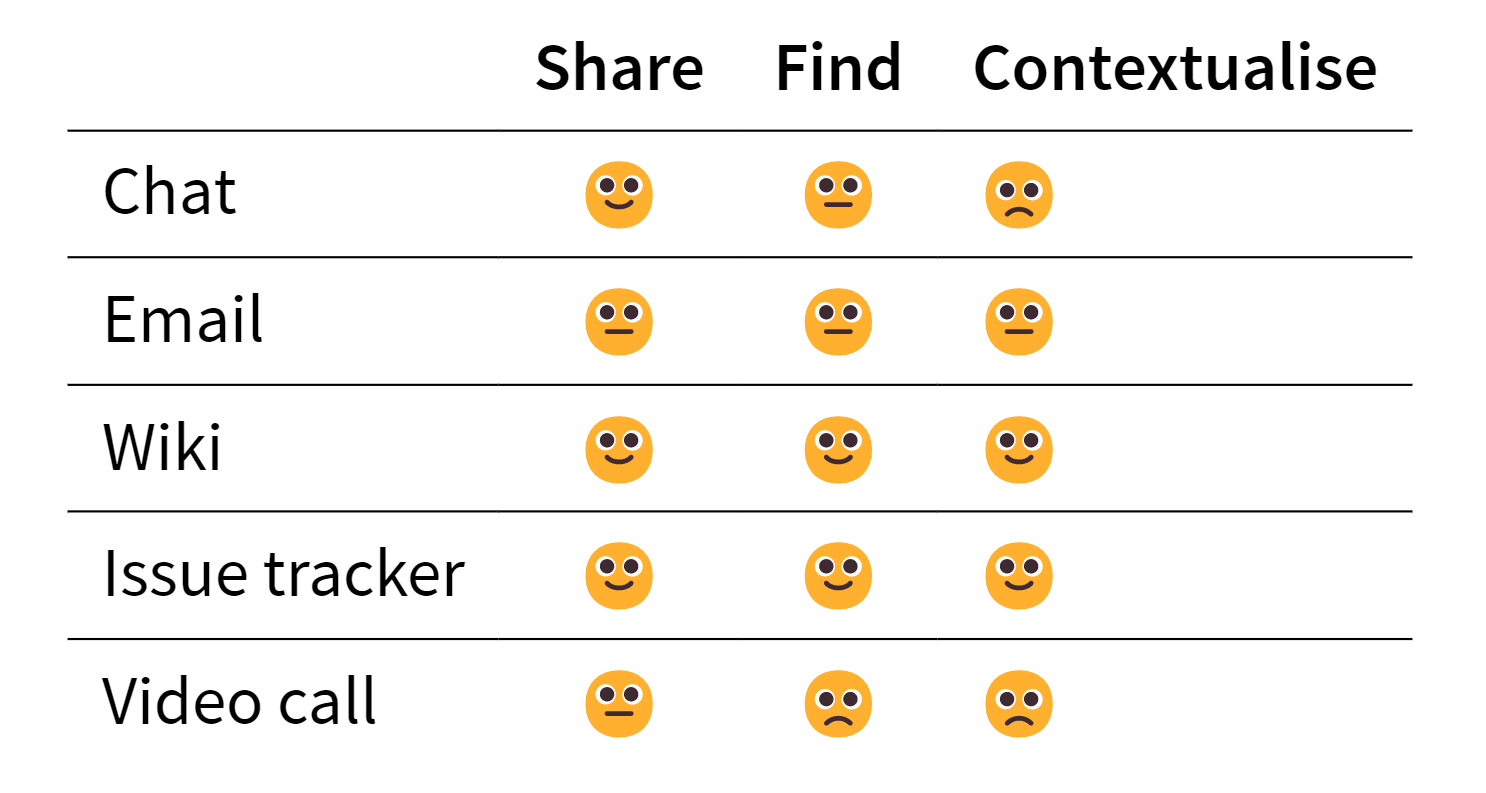Remote Collaboration

Resetting my communication ways of working in 2023
I have mixed feelings about being 100% remote (Realtair has shared office space, but none of my immediate team are local to Melbourne). The lack of in-person and “real-time” communication can be hard to deal with. Over the last few years, I have read about structuring work and communication in a remote environment and have successfully changed some behaviour, but I feel I can do more.
Working in a distributed team is hard, especially the amount of time we spend in meetings. On reflection, here are some of my pain points:
- So many video calls
- So many video calls without agendas
- Me asking for people to turn their cameras on
- Asking questions to people and getting a “please repeat the question” aka the “I wasn’t listening” response
It was painful.
Not to mention the struggle of finding appropriate meeting times across multiple time zones - almost impossible at times!
So, a reset for 2023.
Recently I stumbled upon a video that shares some insight into working remotely. Many of these views challenge my current ways of working - like using Slack for all things - and championed mediums I traditionally dislike. Nevertheless, there are some excellent points; some I agree with, and some I don’t.
No, we won’t have a video call for that
You can see his slides here
Some takeaways
There is so much good content in here - I will try to distil some of what resonated with me, but I recommend watching the video in full.
The framing
- Working in a distributed team means working asynchronously.
- A distributed team is a professional group whose members do not rely on proximity in order to routinely collaborate productively
- Being productive in a distributed team is a skill that most people must learn; it is not innate to us.
- Nothing has as dire impact an on productivity as poor communications
- A capable distributed team habitually externalises information ← this is a big one.
For me, one of my biggest challenges is that last point. Encouraging the team to be as transparent as possible to encourage open and honest collaboration can be hard when we are locked up in private channels and DMs in Slack.
Modes of communication
Florian outlines five major modes of communication in teams and talks about their pros and cons:

The wiki, and the Issue Tracker - basically Atlassian are the clear winners for Florian. Email and chat are on the same par for different reasons, and video chat is the clear loser here.
After listening to the talk and reflecting on my experience, I see where he is going. I have also used the wiki much more since going remote. I have also used Slack much, much more - and I realise how hard it has been for me to search for details and try to correlate messages between channels and DMs.
A focus on externalising information for open and honest collaboration is key.
Thinking Slides
 Originally I thought chat was a good tool for asynchronous work (maybe I still do). But Florian makes some good points about it essentially being synchronous. At best, we are waiting for responses, at its worst, we are continually disrupting deep work by constantly distracting and breaking others’ concentration.
Originally I thought chat was a good tool for asynchronous work (maybe I still do). But Florian makes some good points about it essentially being synchronous. At best, we are waiting for responses, at its worst, we are continually disrupting deep work by constantly distracting and breaking others’ concentration.
 Anyone who has been on a video call with me would not be surprised when I ask for the camera to be turned on. Florian knows what he wants, and what he wants out of a video meeting is to pick up on contextual and nonverbal cues.
Anyone who has been on a video call with me would not be surprised when I ask for the camera to be turned on. Florian knows what he wants, and what he wants out of a video meeting is to pick up on contextual and nonverbal cues.
 I have written about this before. If you are going to take the time away from people to join your meeting, you had better be framing it correctly. Give them a chance to prepare, research, and know what they are in for. Without an agenda, we won’t know if the meeting has achieved its goals.
I have written about this before. If you are going to take the time away from people to join your meeting, you had better be framing it correctly. Give them a chance to prepare, research, and know what they are in for. Without an agenda, we won’t know if the meeting has achieved its goals.
Reclaim your time by using outlook more effectively
 I struggle to do this effectively, and I need to get better. If we do have a meeting, we need to be able to externalise the content. What was discussed, what actions were there, who is driving what? Often you end up with a wiki anyway - can we just collaborate on there and have a 15min wrapup?
I struggle to do this effectively, and I need to get better. If we do have a meeting, we need to be able to externalise the content. What was discussed, what actions were there, who is driving what? Often you end up with a wiki anyway - can we just collaborate on there and have a 15min wrapup?
Once you do meetings right, you no longer need most of them.
 Another skill for me to get better at. Stop asking this question and start giving people deadlines. Some folks don’t want to voice questions on a public call or slack channel in real-time. Give some time and space to think and respond appropriately.
Another skill for me to get better at. Stop asking this question and start giving people deadlines. Some folks don’t want to voice questions on a public call or slack channel in real-time. Give some time and space to think and respond appropriately.
Additionally, ensure that you follow up on your follow-up. For example, if you ask for feedback or a task to be completed by a specific time, hold that person to it. If people think you don’t care or follow up on tasks, they may eventually stop doing them.
Wrapping up
I have only touched on part of the content in the video. There is much more about briefing people properly, so they have the right amount of context and information to do their jobs without having to be in a room with you.
Another section deals with the constant stream of information, questions and tasks that come your way. Florian describes a solid approach to prioritising and deferring work while retaining responsibility. Get around it.
Overall there are some great takeaways from this talk. I will adopt some of these strategies to reduce the need for video calls and reduce the stress of zoom fatigue for my team and myself. However, I suspect it will be a long process to change existing behaviours.




Comments